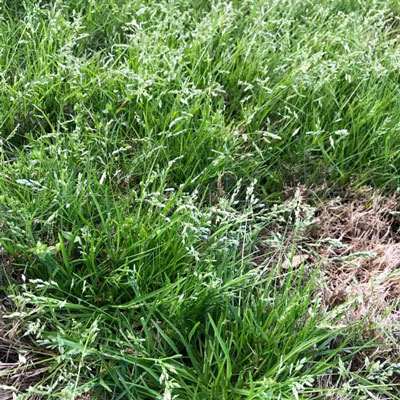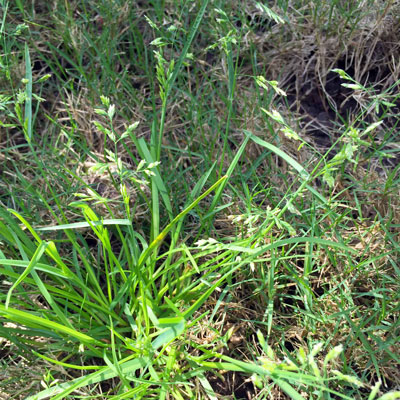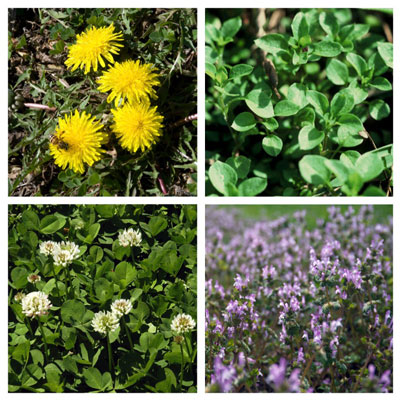PREVENT WINTER WEEDS NOW!
You get only one chance each year to avoid annual bluegrass (Poa annua), rescuegrass and ryegrass, and that time is here now. (Actually, if you’re unable to apply the granules this weekend, next week will be fine. I’d just suggest you get them purchased to be sure that you have them.)


If you fail to act between now and Labor Day you’ll get to look at these ugly, cool-season, annual grassy weeds from mid-winter until May.
And please don’t call me or post questions on my Facebook page once you have them growing and setting seeds all over your yard. I won’t be able to help you. All I’ll be able to say is “Mark the calendar to apply pre-emergent granules the last week of August or the first week of September.” (Just like I’m telling you now.)
Here are the facts, pure and simple…
• Cool-season annual weeds germinate with the first cold front and rain in September.
• Cool-season annual grasses include annual bluegrass (Poa annua), rescuegrass and ryegrass.
• Once these germinate and start growing, you have no way to eliminate them. You’ve blown it for another entire year.
• “Pre-emergent” granules kill the germinating seeds before they can establish and make viable plants. They are your only option in lawns.
• Three common products are Dimension, Halts (now labeled as Weed-EX Prevent with Halts”) and Balan.
• They will likely be labeled as “crabgrass preventers.” That’s how we use them in the spring. Don’t let that bother you. It’s the same products, except you need two applications in the spring and you only need one for the winter weeds – but have I mentioned that you must make the fall application at the correct time? Now! 🙂
• These materials are safe for use around trees and shrubs, but you still must read and follow label directions. Just like you always do. 🙂
• Do not apply to new lawns until they have been through their first winters. Do not apply if you intend to overseed with ryegrass.
• Timing: Now through Labor Day. I normally just say, “The last week of August and the first week of September.” This isn’t rocket science, but I’m also not willing to bend the numbers much more than that on the late side. It’s better to be a few days earlier than necessary than to be a day or two too late, because once the seeds sprout and the weeds start to grow, you’ve blown it.
• Mow the lawn, then apply the granules and water moderately to settle them onto the soil surface.

For broadleafed weeds…
• There are also cool-season weeds that are not grasses. We classify them as “broadleafed weeds.”
• That list includes clover, dandelions, henbit and chickweed.
• These weeds can be controlled by application of Gallery pre-emergent granules, also in the same time period of the last week of August through the first week of September.
• You cannot mix the two types of pre-emergents in your fertilizer hopper. Their granules are of different sizes and are, as a result, not going to mix well. You must make two separate passes over your lawn, then water moderately.
• With broadleafed weeds you do get a second chance. You can apply a broadleafed weedkiller containing 2, 4-D to actively growing weeds late in the fall or as they’re gearing up in very early spring. Read and follow label directions carefully to avoid damage to desirable plants.
If you hire a lawn care service…
If they have delivered good results in terms of an attractive lawn, stick with their recommendations. My suggestions and timings here are for use by consumers. Commercial applicators have their own products and schedules, and they can’t be on all of their customers’ lawns on the same day just because “Neil said today is the day.” If they have served you well, trust their advice.
